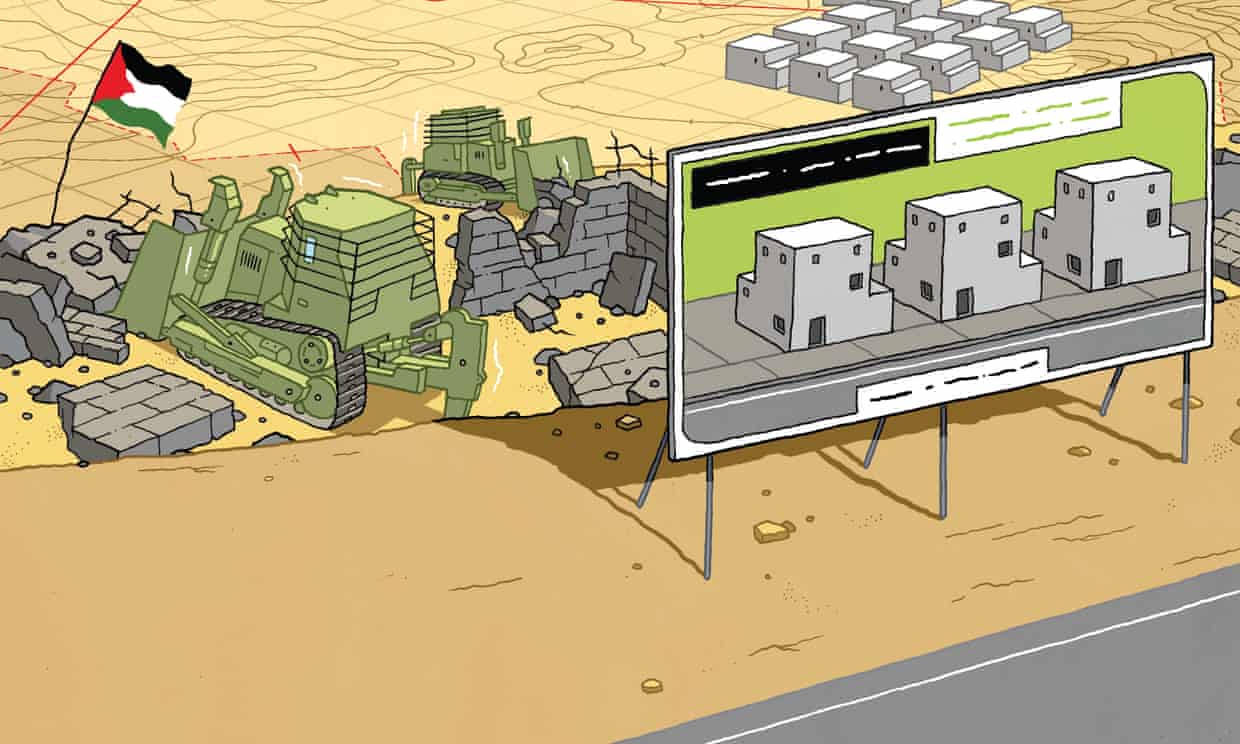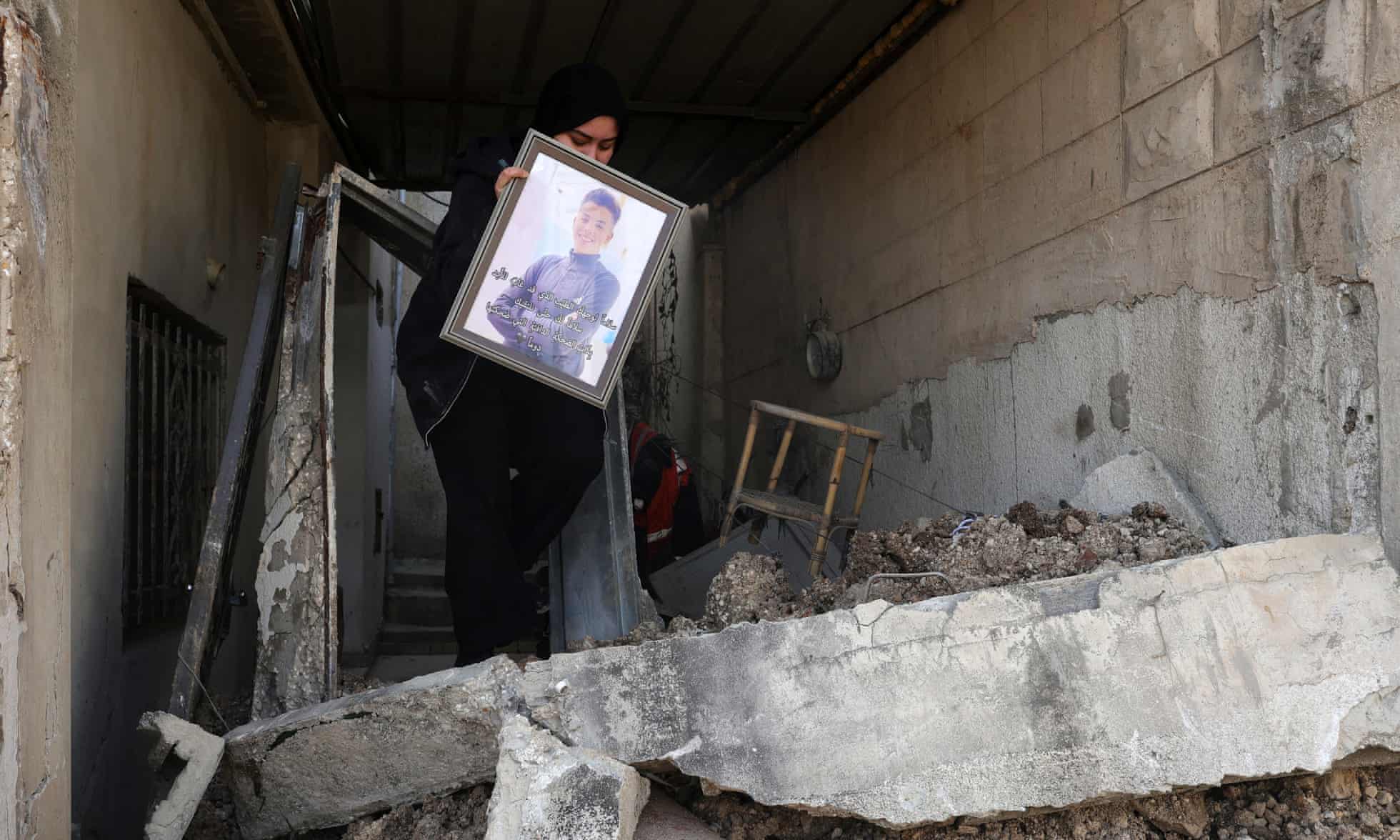 uttoned up against a biting wind, Khalil Tufakji, a 65-year-old Palestinian cartographer, points down from the Mount of Olives in the east of Jerusalem towards a huge wasteland – the last remaining space in the ring of Jewish settlements that surround the city.
uttoned up against a biting wind, Khalil Tufakji, a 65-year-old Palestinian cartographer, points down from the Mount of Olives in the east of Jerusalem towards a huge wasteland – the last remaining space in the ring of Jewish settlements that surround the city.
This 35 sq km plot of West Bank land was confiscated several years ago and the settlement of Maale Adumim, now home to 40,000 people, was built on the south-eastern corner. But most of the plot still remains empty.
With Donald Trump now in the White House, Tufakji fears that Israel’s prime minister, Benjamin Netanyahu, will seize his chance to announce another expansion of settlements; bulldozers are ready, pink-roofed homes will be up in no time, and busloads of new immigrants – many arriving nowadays from war-torn Ukraine – will be whisked through settler roads and tunnels so fast they won’t see the Arab villages that lay claim to the land.
They won’t even know they’re in a settlement. By the time they close their front doors, the whole area will have been annexed to Jerusalem, thereby not only cutting the city off from a hoped-for Palestinian state, but slicing the West Bank in two.





 Later this month, on the holiday of Purim, Jewish people will dress in silly costumes, eat...
Later this month, on the holiday of Purim, Jewish people will dress in silly costumes, eat... On Monday, August 6, 1945, after six months of intense firebombing of 67 other Japanese cities,...
On Monday, August 6, 1945, after six months of intense firebombing of 67 other Japanese cities,... In its 38 years of existence, the USA TODAY Editorial Board has never endorsed a candidate for president....
In its 38 years of existence, the USA TODAY Editorial Board has never endorsed a candidate for president....






























